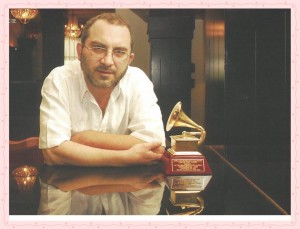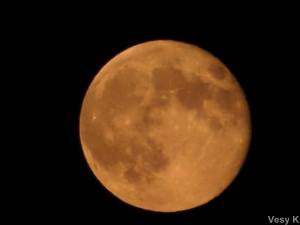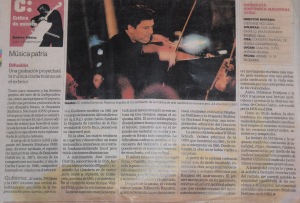
Carlos Castro is one of the most original and important Composers of Costa Rica. He is also the first and only Costa Rican Composers to win a Grammy for his compositions. Carlos comes from a movement in Costa Rica derive form Latin American music traditions or “Latino-Americanismo”. Carlos Castro’s musical language and style merges with elegance and sophistication different influences and music traditions, some from Costa Rica, (such as aboriginal, folkloric and Classical Music traditions), and other musics from diverse cultures and styles such as world music, rock and Jazz. He is very effective in using these influences and creating his own style. At the same time his writing is very economical, clear and always with a message he wants to convey to the listener. Therefore I like to define his style as a Cosmopolitan Latin-American, “Latinoamericanismo Cosmopolita”
Carlos studied mostly in Costa Rica, so he is in direct line with Costa Rica’s Classical Music tradition. As a student of the two main Costa Rican Classical Music Composers of the early 20th Century, Carlos was influence by Benjamin Gutierrez and his concept of ”New tonality and Bernal Flores his concept of “thematic Structuralism”.
Additionally, there are in his Music influences from Literature, the Theater and Mysticism. The latest is a strong element in the conception of his compositions. From his interest in mysticism and application of some themes in his music, Carlos gets his nickname of “El Mago” or “the Magician”.
Recently, Carlos uses the technique of re-composing his musical material from one work into another. This practice “allows him to explore all the expressive possibilities of the Music material”. Each work then transcends to different parallel realities or universes, creating different perspectives and angles derived from the same musical material. “One essence attired with Color”.
“La Serenata de la Luna”, (and its Piano and viola Version), is a good example of his vocabulary and musical style. This composition in both, Orchestral and Piano versions were dedicated to me. These works bring to the viola repertoire a unique refreshing experience for the performer and audience alike.
“Serenata de la Luna” Concerto for Viola and String Ensemble

Genesis
This work was dedicated to me as part of a recording project with Naxos that I brought to the National Center for Music of Costa Rica. Unfortunately due to politics and self-interest, this important project for the promotion the Classical Music of Costa Rica was forcefully abandoned by the new administration of the Ministry of Culture of 2008-2013 and the misdirection of the Executive Director of the CNM, (National Center for Music), Music Guillermo Madriz. This happened in spite of the approval of the project by two Governments, Cultural Ministry and a Cultural Boards; rehearsals with the orchestra and articles in the newspapers. Needless to say these actions by these administrators violated Costa Rican Laws. Here is one of these articles reviewing on of the concerts with emphasis in the revival of the viola concerto by most important Costa Rican composer Benjamin Gutierrez.
Unfortunately this demonstrates the lack of democracy in the treatment of artist, the limits imposed by Cultural Ministries that are managed by mediocre administrators with limited artistic understanding, culture, education and respect for the population of artists in their native countries. It also shows the problems that most of Latin- American Artist encounters in their country of origin.
As part of this project, the concerto had a reading, or informal premiere, by the National Orchestra of Costa Rica at the CNM, (National Center for Music), on September 2012 under David Robert Coleman. It had it official world premiere in New York City with the North/South Consonance Chamber Orchestra under Max Lifchitz on June 18th, 2013.
I am including the copy of the article about the project from ‘La Nación” newspaper on Sunday September 12, 2010.
Synopsis of the Concerto

The “Serenata de la Luna” is a concerto for viola and string ensemble, (String Orchestra). A five-movement work, the concerto was inspired by the symbolism of the Tarot Card of the “Moon”. The five movements of this concerto are quasi Bagatelles and have a cyclical structural treatment. Another element used by the composer is the Nocturne, or night music, which reflects the nocturnal and sensual characteristic of the card.
According to the composer, the changing nature of the Moon on the sky and the emotions it creates are the elements he portraits in the “Serenata”. In addition, the composers selected the String Orchestra for its capacity to produce a morbid sound. The Solo Viola part also contributes to these ideas, because of its darker, romantic and mysterious sound. These characteristics contrast to the heroic sound of the violin or the lyric sound of the cello would have.
I- Enérgico
This movement is capricious and very dramatic. During its introduction section, the Solo viola, cellos and Bases create a mysterious and rhapsodic character filled with expectation. Suddenly the music is transformed into a brighter and singing melodic lines that give us the impression that we have arrived and we are introduced to the main character of this theatrical play, the Viola. The strings explore a whole range of emotions by creating a contrasting and colorful score. From the very dark and low sounds to brighter and faster passages in both the Viola and Orchestra socre. This colorful score gives us at times the impression of waterfalls, which depicts the concept of water implicit in the tarot card.
Structurally this movement is the genesis of the next four movements that follow, since it introduces all the melodic materials and ideas that will reappear later in the piece.
II – Expresivo
This movement is a small musical poem, a very beautiful piece full of expression and virtuosic passages. Here the composer transforms himself from “the Magician” into a Poet.
The score supports the beautiful lines of the viola with colorful and slow harmonies on the strings. The melodic lines in the Solo Viola part use all the registers of the instrument quoting some rhythmic elements of rock and Jazz. These rhythmic elements give energy and contrast to the expressive flow to the movement.
In the middle section of the movement, there is a dialog between the Viola, basses and cellos that is reminiscent of the beginning of the first movement. Here it is transformed from its dark and anxious nature to a virtuosic and playful passage.
In the last section of the movement the melancholic melody presented in the first movement reappears and it is expanded in melismatic-passages. The last gesture of the movement is a beautiful and a magical moment. Here the composer tells the audience that they are not longer under the seductive music spell of “The Magician” and the beautiful Musical Universe he has created.
In the version for viola and piano of this movement, Carlos also explores the color and articulation capabilities of the piano to support the melodic lines of the movement. The sense of beauty develops a different and refreshing perspective, but equally beautiful and magic.
III – Como un canto popular
In this movement we hear elements of Costa Rican folkloric Music, specifically the 12/8-meter rhythms characteristic of the music of the Northern Province of Guanacaste. This music uses traditional marimbas and in the score the plucking of the strings make allusion to this folkloric instrument. It could also be influence of Guitar music, since Carlos is a Classical Guitar player.
The movement has singing lines and dynamic melodies on the viola that contrast with the Pizzicato strings. The music on the solo viola, cellos and basses presented in the introduction of the first movement and later transformed in the second movement changed again and now uses the viola and the bass this time. This change remind me of Jazz textures and style.
IV – Dramático y temperamental
The shortest of the five movements in the concerto, this movement is very dramatic and posses a felling of urgency and sudden change. It is a bridge between what was before and what will come next.
V- Rapsódico
In this movement the symbolism of the Tarot Card takes more importance than in other movements. The orchestra and the viola play their lines together in inversion as the water reflects the distorted light and reflection of the Moon in the nocturnal sky. The viola plays a high G that also describes the howling of the dog in the picture of this card, (Carlos says is a Wolf).
There are fugato passages, virtuosic passages for the orchestra and the viola, a very colorful score with beautiful melodies presented in earlier movements.
Throughout the virtuosic and melodic passages Carlos explores all the possibilities of colors, technique and expression of the viola.
This is a great work full of dramatic, lyrical and virtuosic moments, it is a great addition to the viola repertoire.

